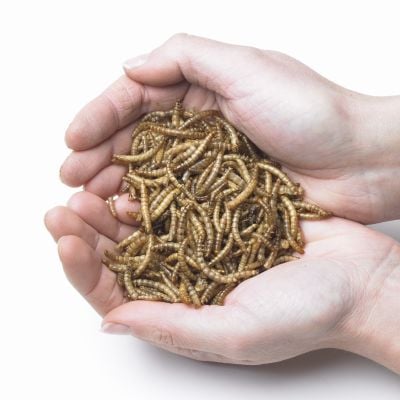Wren Factfile
In part because of the exceptionally wide range of habitats that the Wren breeds and survives in, it is has the accolade of being the most common breeding bird in the UK. It is small bird with a somewhat dumpy appearance, and with its upturned tail, thin long bill, brown plumage and white eye stripe, it cannot be mistaken for any other bird. Its astonishingly loud song is also a great giveaway to its presence.
Video footage of Wrens
Wren nesting and breeding habits
The Wren’s nest is a beautiful and delicate dome construction consisting of moss, plant material, lichen, leaves and feathers, and located in a hollow or crevice in a tree, wall, bank or rock face. Other locations include behind climbing plants such as ivy, plus nest boxes will sometimes be used. The male builds the main structure with the female then lining it with feathers, though the male may build several nests with the female then choosing the right one. However, all the nests the male builds may be taken by females, as the species is polygamous and therefore the male bird may mate with several females – all of which can go on to successfully have young. Incubation is by the female only of the 5-6 eggs, with two broods per season normal. Both parents feed the young.
Wren history and population trends
The UK population trend for the Wren, especially in England, has been one of moderate increase. Overall though, the population is seen as stable – though huge population crashes occur during harsh winters. When this happens though, the species is usually able to quickly bounce back due to its prolific breeding habits (i.e. polygamous, large brood size, two broods per season, massively varied habitats for nesting).
Behaviour traits of Wrens
The Wren’s behaviour can be highly entertaining to observe, as it flits from once place to another – its short little wings a blur as it goes – in search of food, and with ability to effortlessly manoeuvre itself under and into the tightest of nooks and crannies. Despite being highly territorial, in the winter months and especially in very cold weather, Wrens will roost together in enclosed spaces and there may be several dozen birds squashed together to keep warm.
Wren diet and food
Insects, insect larvae and spiders make up the Wren’s diet, with a limited amount of small seeds also eaten. In the garden, Wrens will not normally feed on food put out such as seeds and suet, however live mealworms are likely to be taken and probably readily so in the breeding season.
Frequently Asked Questions
Are Wrens a good bird to have around?
Yes, Wrens are a really good bird to have around in gardens, as they eat a large number of insects and other invertebrates. Plus, they’re a great little bird to look at and have a delightful and very loud song.
What is the best food to feed Wrens?
The only food you can put out which Wrens might eat is live mealworms.
How do you encourage Wrens in your garden?
The best way to attract Wrens to your garden is with the right sort of habitat, which would include dense hedges, piles of old and decaying logs and branches, plus areas left relatively wild. All of this helps attract Wrens, as they like to get into and under materials and vegetation in order to catch insects and other invertebrates.
Where do Wrens go in winter UK?
During the winter, Wrens in the UK stay relatively close to where they were in the summer months, though may stray a little further in search for food – so perhaps would go from a garden to nearby woodland. Wrens from northern mainland Europe typically migrate, with some from Scandinavian countries reaching as far as Spain.
Do Wrens come out at night?
No, Wrens do not come out at night.








